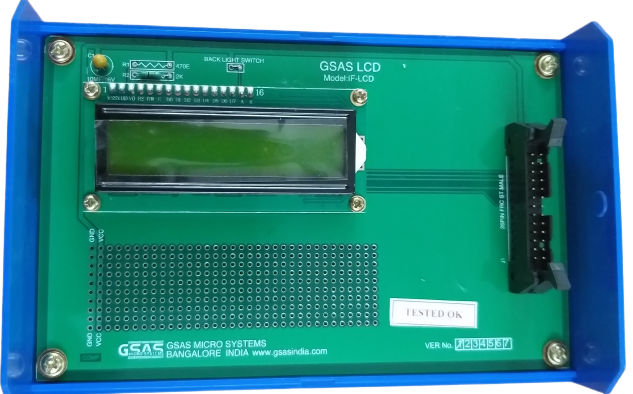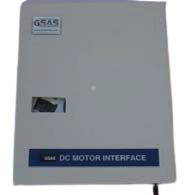


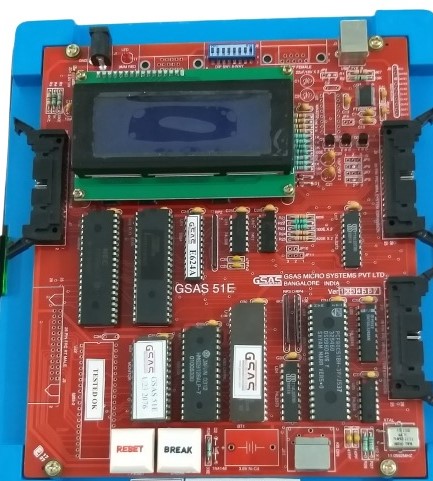
8051 family of microcontrollers and its derivatives are increasingly becoming popular for Instrumentation and control applications due to its speed and powerful instruction set which are essential for real-time applications. This has created the need for a good trainer and development tools. 51E (a low cost version of 51) provides a complete solution for this requirement. It can be used as flexible instructional aid in academic institutions and a powerful development kit in R&D Labs. The system firmware provides standalone monitor, serial monitor, one line assembler, disassemble and drivers for EPROM programmer and parallel printer interfaces. 51E is supplied with comprehensive and user friendly documentation as well as windows based communication software with online-help.

85E is the economy model of MPS 85-3 Microprocessor trainer based on the popular 8085 CPU with onboard LCD and PC connectivity through its RS-232-C port. 85E can be used as flexible instructional aid academic The system firmware provided stand alone mode monitor, serial monitor, single line assembler and dis-assembler 85E is supplied with comprehensive and user-friendly documentation along with windows drivers to communicate with host PC.
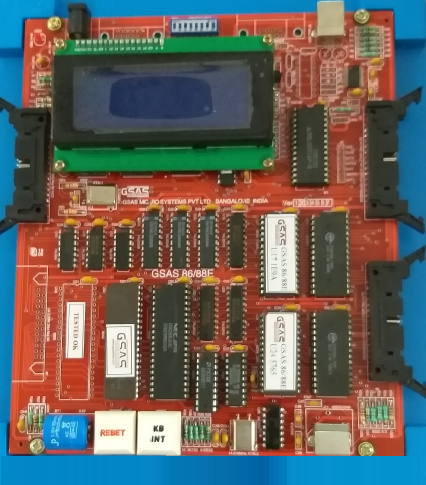
86/88E is an economical version of our advanced microprocessor trainer 86/88-3. It is a powerful, general purpose microprocessor trainer which can be operated either with 8086 CPU or 8088 CPU at a clock frequency of 5MHz in maximum mode of operation. It has provision for on-board NDP (Numeric Data Processor) 8087. It configured for different modes of operation using DIP switch settings. The basic system can be expanded through the system bus connector. The powerful firmware provides keyboard monitor, serial monitor, one-line assembler, disassemble and driver programs for parallel printer interface and PROM programmer interface. 86/88E is supported with comprehensive and user-friendly documentation. 86/88E can communicate with a PC compatible host system using the DOS/window based Driver Software supplied along with the trainer. All the standard commands of the serial monitor of 86/88E are fully supported by this package with online help. In addition, object code files (HEX files generated using PC native tools like MASM, TASM) can be downloaded to 86/88E from the host computer system, permitting the development of powerful application software. All these features make 86/88E a complete single board microcomputer for development in R&D labs and industries or for training in research and educational institutions.
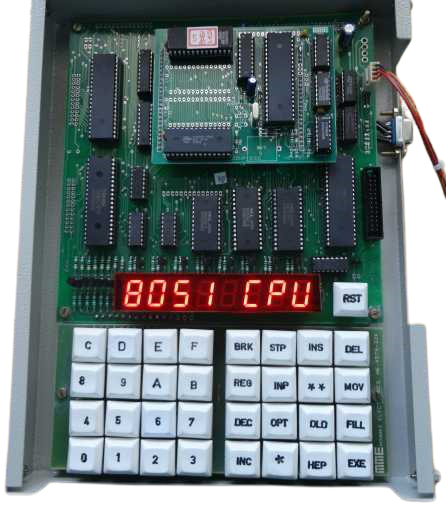
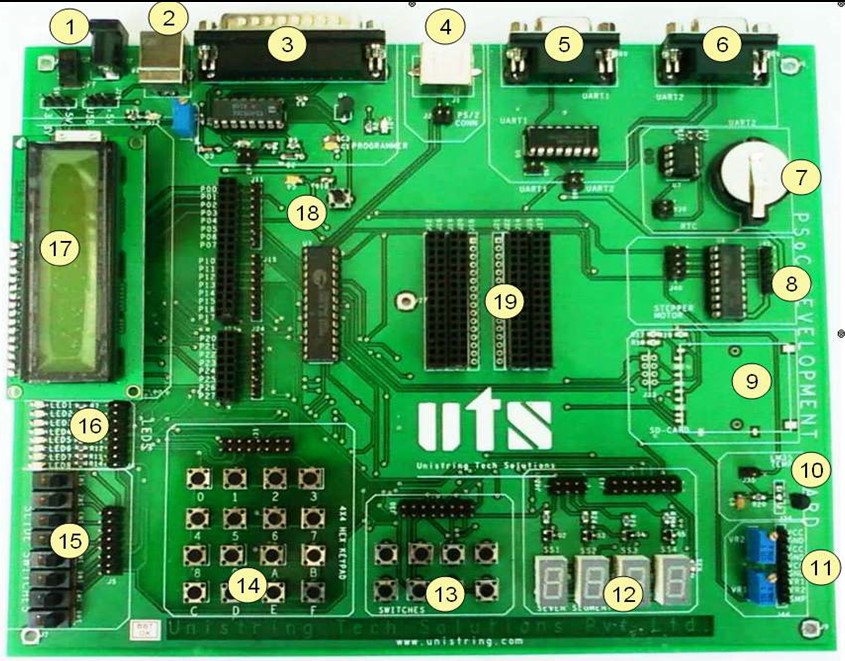
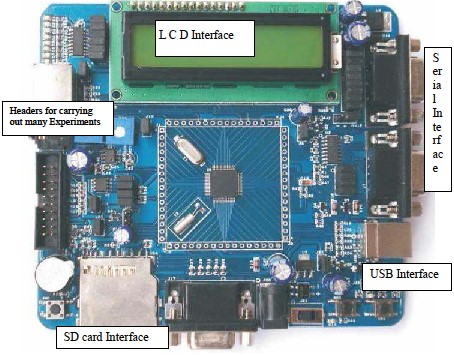

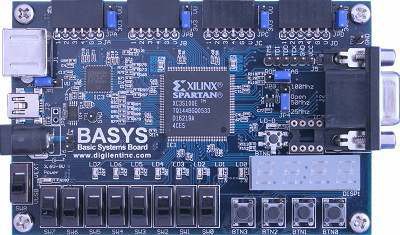
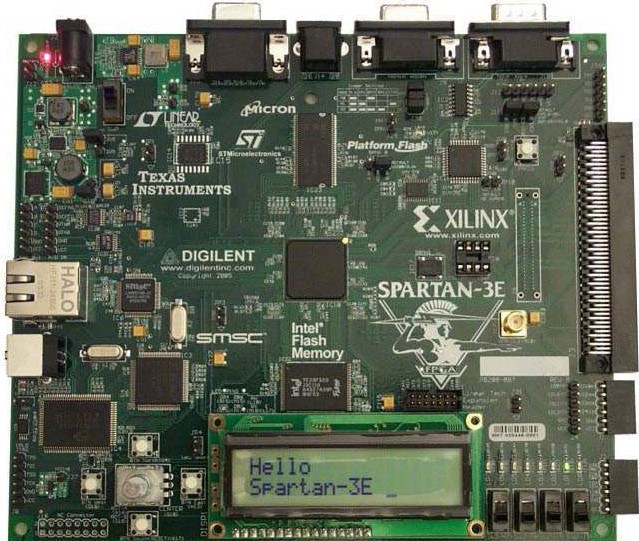
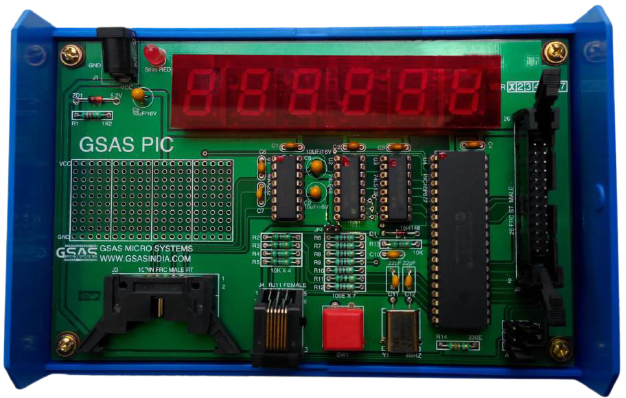
GSAS PIC is supported with MPLAB IDE for developing the user applications source in assembly language with the HITECH C complier(PICC) Software, the user can develop programs in C language can be downloaded and debugged using the optional in-circuit debugger module(ICD).
MAIN FEATURES: GSAS PIC Operates on can be operates on +5V DC power Supply Optional ICD module allows downloading of user programs to the board. Further it supports full speed execution of user programs. ICD enables the user to debug the programs through single-stepping and break points. Assembly language programs can be developed using MPLAB IDE supplied along with the board. 24 I/O lines are terminated out to the 26-Pin connector. 6 Digits seven segment LED display are provided on board RJ11 Six pin GSAS PIC Compatible interface modules are provided along with the relevant programs. ACCESSORIES (OPTIONAL): Power Supply:+5V@3A;+12V@250mA and +30V@100mA(required for some of the GSAS interface modules) Interface modules for training purpose :Keyboard, Elecator, Diplay, Dual DAC,12 bit 8 Channel ADC, Logic controller, Traffic lights, Tone generator, stepper motor, real time clock interface, Dual slope ADC, 16 Channel ADC interface etc., In Circuit Debugger with cable, Model: GSAS ICD HITECH C Compiler(PICC) Software to interface with MPLAB IDE for developing programs in C SPECIFICATIONS: CONTROL PROCESSOR PIC 16F877 MCU @4mHz MEMORY Program Memory: 8K of on-chip flash memory Data Memory: 360 bytes of Onchip RAM memory PHERIPHERALS Internal: 10-bit 8 channel on chip ADC3 On-chip programmable interval timer one of which can be used as oscillator source. I on-chip capture/compare/PWM(CCP) module. I on-chip i2c compatible master synchronous serial port MSSP module. I On-chip UART for serial communication supporting all standard bauds from 110 to 1920 256 bytes of on-chip Data EEPROM memory. INTERFACE SIGNALS Serial I/O: RS 232 through on-board 9 pin D-type female connector. INTERRUPTS Internal: Internal Timer, ADC, Capture/Compare/PWM and serial interrupts a total of 12 Internal Interrupts. External: RBO/INT is a available as external interrupts for user. Power Supply Requirement: +5V@25mA+9V@500mA SCOPE OF SUPPLY GSAS PIC board RS232 Serial cable for programming User Mannual.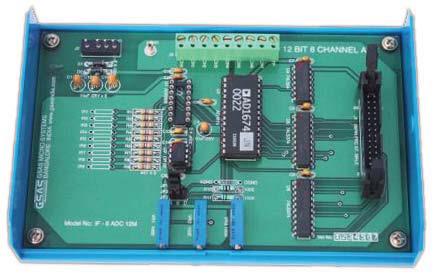
12-BIT 8 CHANNELADC INTERFACE MODEL: IF-8ADC 12:
This interface is based on analog device AD1674, ADC with 12-bit, 10µsec sampling rate.AD1674 has a built-in sample and hold amplifier too. The ADC accepts Unipolar (0-10V) or Bipolar (±10V or ±5V) Signal inputs. Provision for an optional 8 channel multiplexer, ADG508. The channels can be configured to accept current (4-20mA) or voltage signals. The interface has 9 pin terminal strip to feed the analog input voltages. This interface allows the user to become familiar with various applications of high precision ADC’s and analog multiplexer.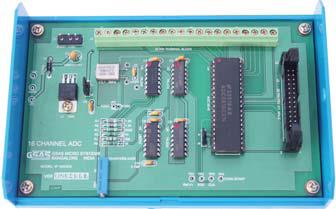
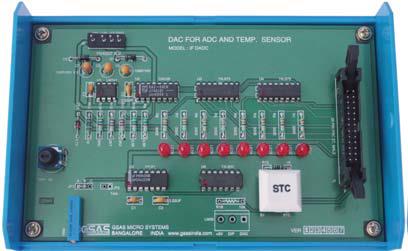
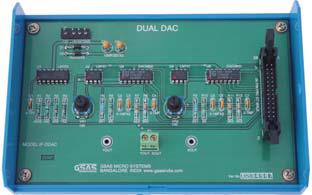
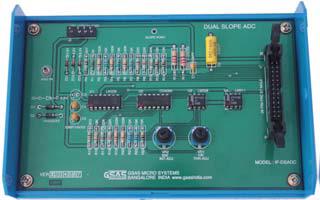

indictors and control the elevator (LED Column).The interface allows the user to write software for simulating the operation of elevator. The software exercise could include priority schemes, different service schemes, etc.

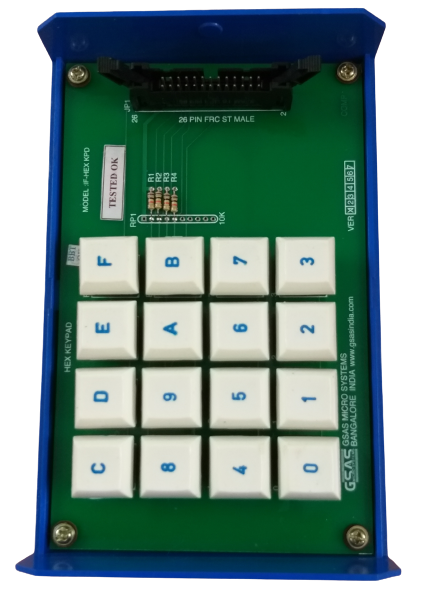
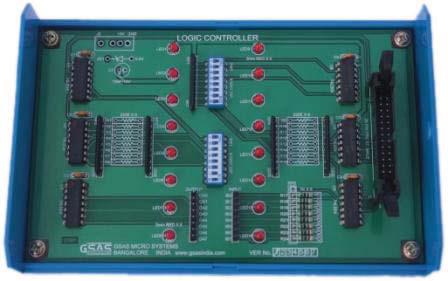
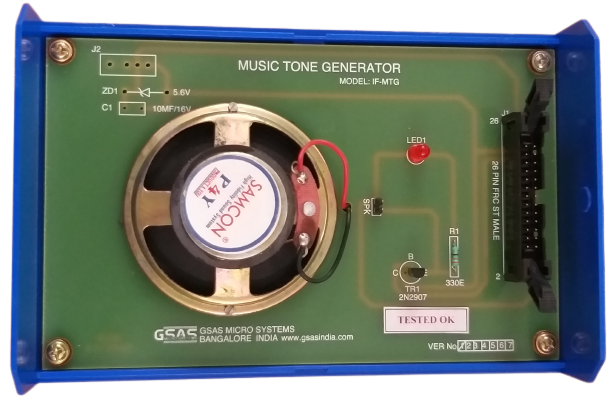
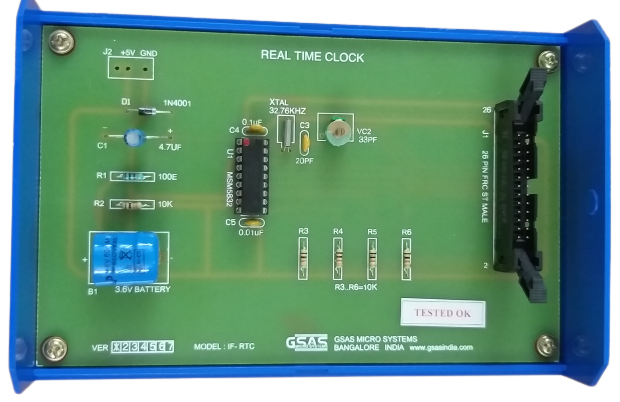
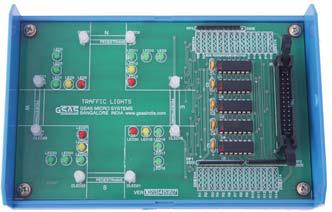
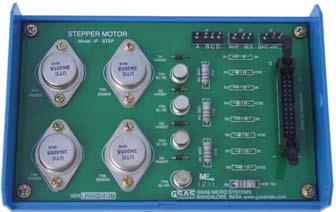
This interface consists of a stepper motor (+12V/+5V DC, 3kg.cm torque), power supply and required driver circuitry along with the necessary software to control the operation of the stepper motor. This interface permits ON/OFF control of the individual coils of the stepper motor at varying speeds in either direction.
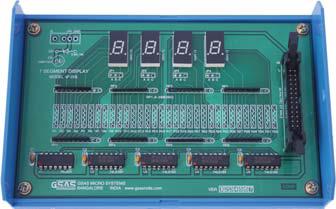
This interface provides a four digit 7-segment display driven by the output of four cascaded shift registers. Data to be displayed is transmitted serially (bit by bit) to the interface. Each bit is clocked into the shift register by providing a common clock through a port line. Thus one port line provides the data and another port line provides the clock.
This interface allows the user to study 7-segment display control techniques, code conversion methods etc.The software exercise could include procedures for table look – up, a variety of bit manipulation operations etc..,
